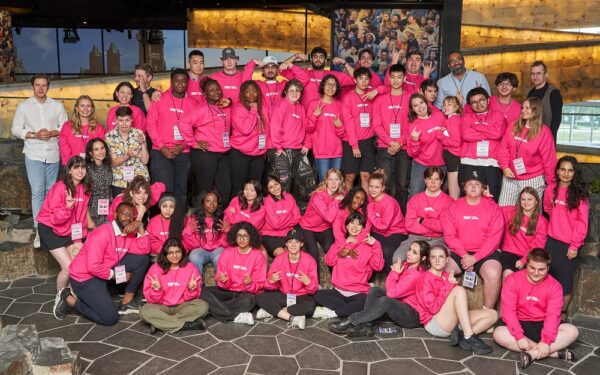April 21, 2016 – Cambridge Bay, Nunavut – With support from CIRA’s Community Investment Program, Nunavut’s Kitikmeot Heritage Society implements advanced cartographic techniques to create accessible archive of Indigenous stories
April 21, 2016 – Cambridge Bay, Nunavut – The Kitikmeot Heritage Society today launched the Fifth Thule Atlas, a digital platform that compiles ethnographic information collected by early Arctic explorers and returns it to descendant Inuit populations before it is lost.
The atlas is a novel approach to cybercartography, combining various forms of geo-located knowledge to map Inuit stories, artifacts and place names. It has been specifically designed to accommodate Inuit approaches to learning, storing and disseminating cultural knowledge. The framework has lower bandwidth requirements to ensure accessibility in northern and remote communities.
Danish expedition the first to collect traditional Inuit knowledge
Between 1921 and 1924, a Danish expedition led by Inuktitut-speaking anthropologist Knud Rasmussen completed the first comprehensive recording of traditional Inuit societies in Canada during the fifth Thule expedition. As Rasmussen’s team travelled by dogsled between Greenland and Alaska, they collected vast amounts of oral traditions, place names, linguistic information, Inuit-drawn maps, photographs and ethnographic objects, using this information to theorize on the origins of Inuit and document what they recognized as a rapidly disappearing traditional lifestyle. While a select amount of this information was published, the bulk of ethnographic objects, field notes and expedition records remain unseen and stored in Danish archives and museum collections.
Global collaboration brings Canadian history home
This project was initiated by the Inuit community, with the support of the Kitikmeot Heritage Society. In partnership with Carleton University’s Geomatics and Cartographic Research Centre (GCRC) and the National Museum of Denmark, the group developed this digital knowledge bank. Using GCRC’s Nunaliit framework, the atlas allows users to navigate Inuit knowledge through intertwined approaches: physical space, written reports, multimedia images and video.
The first phase of work on the atlas is now complete, but this is just the beginning. It has been designed to showcase knowledge related to the Copper Inuit of the Central Arctic, one of four regional Inuit groups encountered by Rasmussen’s expedition. Over the coming years, the Atlas will grow to incorporate additional regional Inuit groups and a range of media, including 3D artifact scans, photospheres and digitized drawings, maps and field notes currently stored in archives throughout Denmark.
This project was supported by Nunavut’s Department of Culture and Heritage, the Canadian Internet Registration Authority’s Community Investment Program, and the Social Sciences and Humanities Research Council.
For more information contact:
- Pam Gross, executive director of the Kitikmeot Heritage Society
[email protected] - Darren Keith, senior researcher and project Lead at the Kitikmeot Heritage Society
[email protected]
- Amos Hayes, project lead at the Geomatics and Cartographic Research Centre, Carleton University
[email protected]
About the Kitikmeot Heritage Society
The Kitikmeot Heritage Society is a volunteer-run, charitable organization with an elected board of directors and executive staff from the community of Cambridge Bay. Board membership consists primarily of elders from the community. Visit kitikmeotheritage.ca or facebook.com/KitikmeotHeritage to learn more.
About the Canadian Internet Registration Authority (CIRA) Community Investment Program
Through the Community Investment Program, CIRA funds projects that demonstrate the capacity to build a better online Canada. The CIRA team manages Canada’s country code top-level domain on behalf of all Canadians. A Member-based organization, CIRA represents the interests of Canada’s Internet community internationally.
About Carleton University’s Geomatics and Cartographic Research Centre (GCRC)
GCRC research focuses on the application of geographic information processing and management to the analysis of socio-economic issues of interest to society at a variety of scales from the local to the international and the presentation of the results in new, innovative cartographic forms. Cybercartography is a new multimedia, multisensory and interactive online cartography and its main products are cybercartographic atlases using location as a key organizing principle. These atlases create narratives from a variety of different perspectives and include both quantitative and qualitative information.




